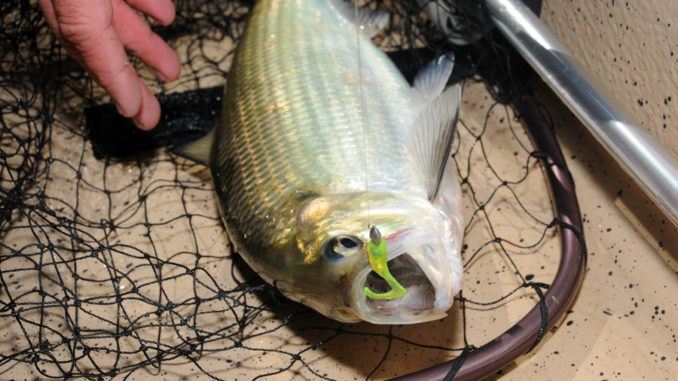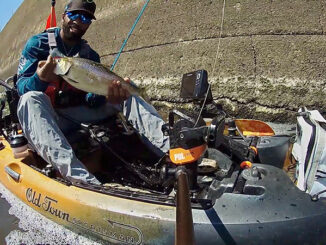
White shad offer plenty of fishing opportunities.
The first fish migration of spring is underway on North Carolina coastal counties and, although these creatures aren’t much to write home about nor do they provide eye-popping photographs to send the local newspaper, they provide excellent and numerous light-tackle thrills.
Easterners also have no trouble popping them into a hot skillet.The American shad (called “white” shad in eastern North Carolina) are headed west to their spawning grounds at the headwaters of the Tar River and Conoco, Mill, Fishing and Swift creeks, not to mention several other streams and creeks east of the fall line in east-central counties.
“They’re catching big American shad right now in the Tar,” Matthew Waddell of Goldsboro’s EZ Bait & Tackle said.
North Carolina has two kinds of shad, American and hickory, that spend most of the year in the ocean, then return to their birth places at shallow inland creeks — just like Alaskan salmon or striped bass, although they’re definitely not as palatable to the taste buds.
White shad grow to decent sizes and on light tackle (ultra-light spinning reels with 4- to 6-pound-test line) can provide jumping displays worthy of a tarpon. In fact, shad resemble tarpon, the giant silver kings that fill Pamlico Sound during July and August, only on a much lesser scale.
“I saw an American that weighed 4 pounds, 2 ounces the other day,” Waddell said.
That is a giant shad.
Hickories probably average 1 pound with 2-pounders considered monsters. But anglers in the right places can catch 50 to 100 shad in a single day. Most will be hickories.
The white shad run in the Tar River started two weeks ago (late January), Waddell said.
Best lures are spoon-and-shad-dart combinations. he said. “You put a Pet spoon at the end of your line and tie on a dart on a dropper up above it. People also use little crappie jigs with curly-tails,”
Top places are the mouth of the Little River where it joins the Tar and around any train trestles or bridges that cross local waterways.
“The best way to fish is from a boat because you can move around and find hot spots, but plenty of people fish from the bank,” Waddell said.
Post reports and photos from your fishing trips on the Fishing Forums, which is free to all registered users of this site.
Not a member of the Sportsman team? It’s free! Register today to get started!



Be the first to comment